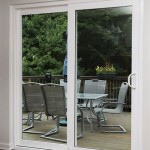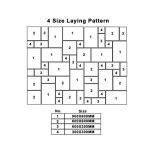```html
Outdoor Patio Paint: Concrete Transformation and Protection
Concrete patios, while offering a durable and cost-effective outdoor surface, often lack aesthetic appeal in their natural state. The application of outdoor patio paint to concrete provides a transformative solution, enhancing visual appeal while offering protection against the elements and wear and tear. Choosing the correct paint and application method is crucial for achieving a long-lasting and satisfactory result. This article examines the key considerations involved in selecting and applying outdoor patio paint for concrete surfaces.
Understanding Concrete as a Painting Surface
Concrete, composed primarily of cement, aggregates, and water, is a porous material. This inherent porosity means concrete readily absorbs liquids, including water and paint. Untreated concrete is susceptible to staining from spills, weathering, and the growth of mold and mildew. Furthermore, the alkalinity of concrete can affect the performance and lifespan of certain paints. Understanding these characteristics is essential for preparing the surface and selecting a compatible paint system.
Before any painting can commence, the concrete surface must be thoroughly cleaned and prepared. This includes removing any existing coatings, dirt, debris, oil stains, and efflorescence (the white, powdery salt deposit that can appear on concrete surfaces). Failure to properly prepare the surface can lead to poor paint adhesion, premature peeling, and an unsatisfactory finish. Professional pressure washing is often recommended to remove loose material and deeply embedded contaminants. Following pressure washing, a concrete cleaner and etcher can further prepare the surface by opening the pores, allowing the paint to penetrate and bond effectively.
The age and condition of the concrete also play a significant role. Newly poured concrete needs to cure for at least 30 days before painting to allow moisture to evaporate and the concrete to fully harden. Older concrete may have cracks or imperfections that need to be addressed before painting. Small cracks can be filled with a concrete patching compound, while larger cracks or structural damage may require professional repair.
Selecting the Right Outdoor Patio Paint
Choosing the appropriate paint is arguably the most critical aspect of a successful concrete patio painting project. Several types of paints and coatings are specifically formulated for outdoor concrete surfaces, each with its own advantages and disadvantages. The selection process should consider factors such as durability, resistance to weathering, UV protection, ease of application, desired aesthetic, and budget.
Acrylic Latex Paint: Acrylic latex paints are a popular choice for outdoor concrete patios due to their water-based formulation, ease of application, and relatively low cost. Acrylic latex paints offer good adhesion, flexibility, and resistance to cracking and peeling. They are also available in a wide range of colors and finishes. However, acrylic latex paints may not be as durable as some other options, and they can be susceptible to staining from oil or grease. They generally require the application of a sealer or topcoat for enhanced protection against wear and tear.
Epoxy Paint: Epoxy paints provide a highly durable and abrasion-resistant coating, making them suitable for high-traffic areas or patios subject to heavy use. Epoxy paints offer excellent chemical resistance, making them resistant to stains from oil, grease, and other common spills. They also provide a hard, glossy finish that is easy to clean. However, epoxy paints can be more challenging to apply than acrylic latex paints, often requiring multiple coats and specific surface preparation techniques. Some epoxy formulations may also be susceptible to yellowing over time when exposed to UV light. It is crucial to select an epoxy formulation specifically designed for outdoor use to ensure UV resistance.
Concrete Stain: While technically not a paint, concrete stain is a popular alternative that penetrates the concrete surface, creating a permanent color that won't peel or chip. Concrete stains are available in two main types: acid-based and water-based. Acid-based stains react chemically with the concrete to create a mottled, variegated appearance. Water-based stains offer a more uniform color and are available in a wider range of shades. Concrete stains provide a natural, translucent look that enhances the texture of the concrete. However, they offer limited protection against wear and tear and may require the application of a sealer to increase durability and resistance to staining.
Elastomeric Coatings: Elastomeric coatings are flexible, waterproof paints that are designed to expand and contract with the concrete, preventing cracks from forming. They are particularly well-suited for patios that are prone to cracking due to temperature fluctuations or ground movement. Elastomeric coatings offer excellent weather resistance and can help to waterproof the concrete surface. However, they can be more expensive than other types of paint and may require specialized application techniques.
Preparation and Application Techniques for Outdoor Patio Paint
Proper surface preparation and application techniques are essential for achieving a durable and aesthetically pleasing finish. Neglecting these steps can result in paint failure, including peeling, cracking, and blistering. The following steps outline the recommended procedures for painting a concrete patio:
Cleaning and Repair: Begin by thoroughly cleaning the concrete surface to remove any dirt, debris, oil stains, and efflorescence. Use a pressure washer with a suitable nozzle to remove loose material and stubborn stains. After pressure washing, apply a concrete cleaner and etcher to open the pores of the concrete and improve paint adhesion. Repair any cracks or imperfections with a concrete patching compound. Allow the patching compound to dry completely before proceeding.
Priming (Optional but Recommended): Applying a concrete primer can significantly improve paint adhesion and durability, especially on porous or previously uncoated surfaces. A concrete primer creates a uniform surface for the paint to adhere to and can help to seal the concrete, preventing moisture from wicking up through the paint. Choose a primer that is compatible with the chosen paint system and follow the manufacturer's instructions for application.
Paint Application: Apply the paint in thin, even coats using a roller, brush, or sprayer. Avoid applying too much paint in one coat, as this can lead to runs, drips, and poor drying. Allow each coat to dry completely before applying the next coat. Two coats of paint are typically recommended for optimal coverage and durability. Pay close attention to the manufacturer's instructions regarding drying times and recommended application techniques.
Sealing (Recommended): Applying a concrete sealer after the paint has dried can provide additional protection against wear and tear, staining, and UV damage. A concrete sealer helps to create a waterproof barrier that prevents moisture from penetrating the concrete and can also enhance the color and sheen of the paint. Choose a sealer that is compatible with the chosen paint system and follow the manufacturer's instructions for application. Some sealers need to be reapplied periodically to maintain their protective properties.
Curing: Allow the paint or coating to cure completely before exposing the patio to heavy traffic or furniture. Curing times can vary depending on the type of paint and environmental conditions. Refer to the manufacturer's instructions for specific curing recommendations. Protecting the painted surface during the curing process can help to prevent damage and ensure a long-lasting finish.
By carefully considering the characteristics of concrete, selecting the appropriate paint system, and following proper preparation and application techniques, homeowners can successfully transform and protect their concrete patios, enhancing their outdoor living spaces for years to come.
```
How To Paint A Concrete Porch Or Patio
:max_bytes(150000):strip_icc()/faux-painted-rug2-5d0d2b1a8ddd4c60a39ffd329840874e.jpg?strip=all)
19 Painted Concrete Patio Designs

The Solution To Decorating Concrete Patios Porches

Before And After Painted Concrete Patio Thistlewood Farm
:max_bytes(150000):strip_icc()/cement-tile-1-of-1-683x1024-f5a283b105e04abf8729e7390f9148bc.jpg?strip=all)
19 Painted Concrete Patio Designs

Paint Concrete Patio

10 Painted Concrete Patio Floor Ideas Jamie Lundstrom

Dulux Concrete Paving

How To Paint A Concrete Patio With Tutorial Tips

39 Painted Concrete Porch Ideas Transform Your Outdoor Space








